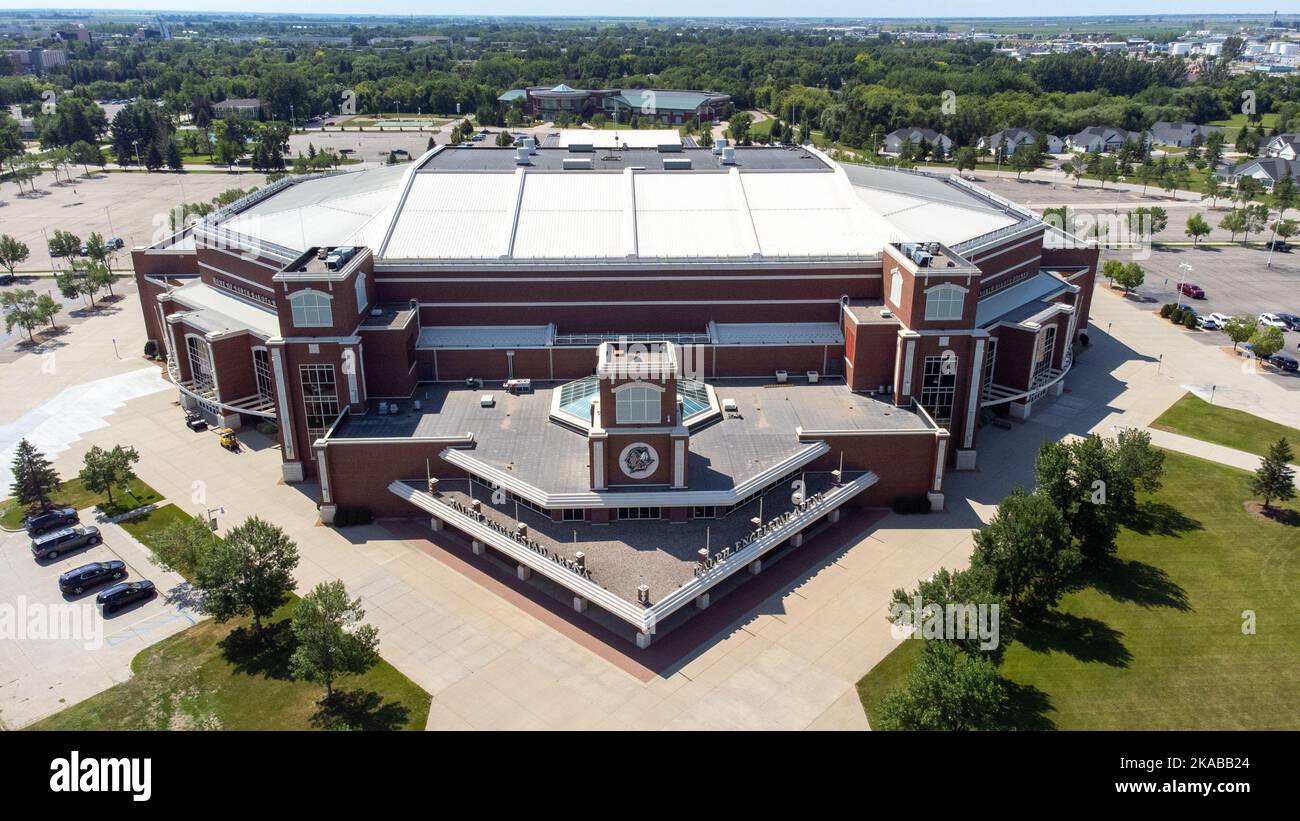
Whispers on the Wind: America’s Enduring Legends, From Coast to Prairie
The vast canvas of America, stretching from the sun-drenched beaches of California to the rugged coastlines of New England, and across the sweeping plains of states like North Dakota, is not merely a geographical entity. It is a living tapestry woven with threads of history, mystery, and an unparalleled capacity for storytelling. Every mountain range, every dense forest, every lonely stretch of highway, and even the quiet, unassuming towns like Arena, North Dakota, hold within them the potential for legend. These are the narratives that transcend mere fact, evolving into something larger than life, reflecting the hopes, fears, and collective imagination of a nation perpetually redefining itself.
From the towering figures of folk heroes who shaped the land with impossible feats, to the shadowy cryptids lurking in the wilderness, and the spectral echoes of historical events, American legends offer a unique lens through which to understand the national psyche. They are the whispers on the wind, the campfire tales, and the local lore that give depth and character to the landscape, transforming the ordinary into the extraordinary.
The Titans of the Frontier: American Folk Heroes

At the heart of America’s legendary landscape stand the larger-than-life folk heroes, figures born from the toil and triumph of a nascent nation. These are the characters who embodied the spirit of progress, resilience, and an almost superhuman capacity for hard work that defined the frontier.
Perhaps the most famous among them is Paul Bunyan, the colossal lumberjack whose axe could fell an entire forest with a single swing, and whose blue ox, Babe, was so enormous his hoofprints created Minnesota’s 10,000 lakes. Bunyan’s tales, often attributed to storyteller W.B. Laughead in the early 20th century, were a romanticized celebration of the lumber industry and the pioneering spirit that tamed the wilderness. He represented the American ideal of conquering nature through sheer strength and ingenuity, a testament to the nation’s boundless ambition.
Equally iconic is John Henry, the "steel-driving man" whose legend hails from the era of railroad construction. An African-American laborer, John Henry is said to have challenged a steam-powered drilling machine in a race to tunnel through a mountain, proving that human will and strength could surpass even the most advanced technology. Though he won the contest, he died "with his hammer in his hand," his heart giving out from the exertion. John Henry’s story, immortalized in countless songs, is a poignant narrative of human dignity, sacrifice, and resistance against the dehumanizing march of industrialization. It speaks to the valor found in the common worker, a deeply American sentiment.
Then there’s Johnny Appleseed, born John Chapman, a real historical figure whose benevolent eccentricities transformed him into a legend. For over 40 years, Chapman traveled across the American Midwest, planting apple orchards and spreading seeds, not for profit, but out of a deep love for nature and a desire to provide for future generations. His gentle, nomadic existence, his friendships with Native American tribes, and his simple, selfless mission resonate deeply with an idealized vision of America’s pastoral past, a stark contrast to the aggressive expansionism often associated with the frontier.
These heroes, whether entirely mythical or based on real individuals, serve as archetypes, embodying virtues like strength, perseverance, and generosity. They are foundational myths that help define the American character, tales passed down through generations, finding new life even in the contemporary world.
Shadows in the Wilderness: Cryptids and the Unexplained
Beyond the realm of human heroes lies a more mysterious stratum of American legend: the cryptids – creatures whose existence is unproven but whose stories persist with remarkable tenacity. These tales speak to humanity’s primal fear of the unknown, the untamed wilderness, and the things that lurk just beyond the edge of perception.
The most famous of these is undoubtedly Bigfoot, or Sasquatch. Described as a large, hairy, bipedal ape-like creature, Bigfoot sightings have been reported across North America for centuries, particularly in the dense forests of the Pacific Northwest. The Patterson-Gimlin film of 1967, though widely debated, remains a powerful image in the collective imagination, fueling endless expeditions and discussions. Bigfoot embodies the wildness that still exists within America, a reminder that despite our technological advancements, there are still vast, unexplored territories and secrets that the natural world holds.

Another compelling cryptid is the Mothman of Point Pleasant, West Virginia. In 1966 and 1967, a series of strange sightings of a winged, red-eyed creature preceded the tragic collapse of the Silver Bridge, killing 46 people. The Mothman legend is a chilling blend of creature feature and ominous premonition, suggesting a connection between unexplained phenomena and impending disaster. It taps into a deeper unease, a sense that the fabric of reality can be thin, and that dark omens may precede catastrophe.
Further east, in the Pine Barrens of Southern New Jersey, lurks the Jersey Devil, also known as the Leeds Devil. According to legend, this creature was the thirteenth child of a local woman, born in 1735, a monstrous infant with the head of a horse, bat-like wings, and cloven hooves, which escaped into the wilderness immediately after birth. The Jersey Devil embodies local folklore and the fear of the monstrous "other," a creature of the night tied intrinsically to a specific, wild landscape.
These cryptids, whether viewed as genuine mysteries or products of overactive imaginations, serve a vital cultural function. They personify the wild, the untamed, and the inexplicable, allowing people to confront their fears and marvel at the potential wonders hidden in the vast American landscape.
Echoes of Ancient Voices: Indigenous Legends
It is impossible to discuss American legends without acknowledging the profound and ancient narratives of its Indigenous peoples. These stories are not merely folklore but are deeply embedded spiritual and cultural teachings, offering a connection to the land that predates colonial settlement by millennia. It is crucial to approach these legends with the reverence and understanding they deserve, recognizing them not as mere "stories" but as profound cultural narratives deeply embedded in spiritual belief systems.
The Thunderbird, a powerful and majestic spirit bird, appears in the mythologies of numerous Native American tribes across the continent, from the Pacific Northwest to the Great Plains. Often depicted as immense, with a wingspan that could block out the sun and eyes that flash lightning, the Thunderbird is a bringer of storms, rain, and fertility, but also a symbol of immense power and protection. Its presence links the heavens and the earth, embodying the awesome forces of nature. For many tribes, the Thunderbird represents cosmic order and the sacredness of the natural world.
Another potent and often feared figure in Navajo belief is the Skinwalker (Yee Naaldlooshii). Unlike the more generalized cryptids, the Skinwalker is not a creature but a malevolent witch who has gained the ability to transform into, or possess, an animal. These shapeshifters are said to commit heinous acts, causing sickness, death, and misfortune. The Skinwalker legend is not a tale told for entertainment but a warning against evil, a powerful reminder of the consequences of violating sacred laws and the dark side of human nature.
These Indigenous legends offer a stark contrast to many Euro-American legends, often focusing not on conquering nature, but on living in harmony with it, understanding its power, and respecting its spiritual essence. They connect humanity to the land in a way that is both ancient and profoundly relevant.
The Blurring Lines: Historical Figures Turned Legend
Sometimes, real historical figures, through the passage of time and the embellishment of oral tradition, transform into legendary status, their lives becoming intertwined with myth. These figures often embody rebellion, courage, or a dramatic defiance of societal norms.
Jesse James, the infamous outlaw of the American West, is a prime example. A Confederate guerrilla during the Civil War, he later became a notorious bank and train robber. Yet, in the popular imagination, he was often romanticized as a "Robin Hood" figure, a rebel fighting against corrupt corporations and authorities. His legend, fueled by dime novels and ballads, transformed him from a ruthless criminal into a symbol of frontier defiance and a hero to the downtrodden, a narrative that conveniently overlooks his violent deeds.
Similarly, Billy the Kid, born Henry McCarty, lived a short but action-packed life in the American Old West, becoming a notorious outlaw and gunfighter. His legend blossomed after his death at the hands of Sheriff Pat Garrett, portraying him as a charismatic, almost tragic figure, an innocent forced into a life of crime. His story, like James’s, speaks to the American fascination with the anti-hero, the individual who stands against the system, however flawed.
Even Davy Crockett, a frontiersman, soldier, and politician, became a legendary figure through exaggerated tales of his prowess as a hunter and fighter. His coonskin cap and larger-than-life persona were immortalized in popular culture, particularly in the 1950s, making him a symbol of rugged individualism and American patriotism. These figures, through the lens of legend, become more than just historical personages; they become vessels for national identity and cultural values.
Modern Myths and the Digital Age
The age of information has not diminished our capacity for legend-making; it has merely changed its medium. Modern legends, often termed "urban myths" or "creepypastas," spread with unprecedented speed through the internet, adapting to contemporary anxieties and technologies.
Area 51, a highly classified United States Air Force facility in Nevada, has become the epicenter of modern extraterrestrial legends. For decades, it has been rumored to house crashed UFOs, alien technology, and even live extraterrestrials. The very name, a cryptic designation for a remote detachment of Edwards Air Force Base, has become synonymous with government secrecy and alleged alien contact, a testament to our enduring fascination with life beyond Earth.
While perhaps less rooted in the traditional "legends of America" category, the rise of internet-born entities like Slender Man demonstrates the continued human need for shared narratives of fear and the unknown. Originating on an online forum, Slender Man quickly evolved into a global phenomenon, illustrating how easily collective imagination can manifest new mythical figures in the digital age.
The Enduring Power of Story in Arena, North Dakota
So, what do these diverse legends, from Paul Bunyan to Bigfoot, from the Thunderbird to Area 51, tell us about America? They reveal a nation grappling with its identity, its origins, and its place in the world. They are a reflection of a society that values courage, challenges authority, fears the unknown, and cherishes its connection to the land.
Imagine a crisp autumn evening in Arena, North Dakota. The vast, starry sky stretches overhead, unmarred by city lights. The wind whispers through the sparse trees, carrying with it not just the scent of prairie grass, but perhaps the faint echoes of tales told around campfires for generations. In a place like Arena, where the horizons seem endless and the natural world holds sway, the conditions for legend-making are palpable. The isolation, the grandeur of the landscape, the close-knit community — these are the very elements that foster the sharing and preservation of stories.
"Legends aren’t just old stories; they’re the cultural DNA of a place," notes folklorist Dr. Sarah Miller, specializing in American narratives. "They evolve, they adapt, but their core purpose remains: to explain the inexplicable, to inspire, to warn, and ultimately, to connect us to a shared past and a collective identity."
From the bustling metropolises to the quiet, rolling plains of places like Arena, North Dakota, the legends of America continue to resonate. They are not merely relics of a bygone era but living narratives that adapt, persist, and continue to shape how Americans understand themselves, their history, and the vast, mysterious land they call home. They remind us that even in an age of science and information, there will always be room for the extraordinary, the unexplained, and the enduring power of a good story.


